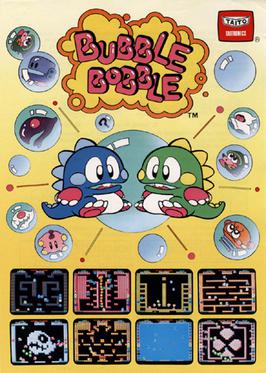
Bubble Bobble is a 1986 platform game developed and published by Taito for arcades. It was distributed in the United States by Romstar, and in Europe by Electrocoin. Players control Bub and Bob, two dragons that set out to save their girlfriends from a world known as the Cave of Monsters. In each level, Bub and Bob must defeat each enemy present by trapping them in bubbles and popping, who turn into bonus items when they hit the ground. There are 100 levels total, each becoming progressively more difficult.
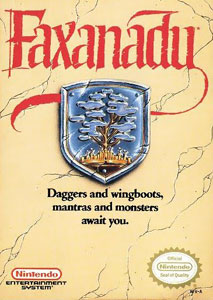
Faxanadu is an action role-playing platform video game developed by Hudson Soft for the Nintendo Entertainment System. The name was licensed by computer game developer Nihon Falcom ("Falcom") and was developed and released in Japan by Hudson Soft for the Famicom in 1987. Nintendo released the game in the United States and Europe as a first-party title under license from Hudson Soft.
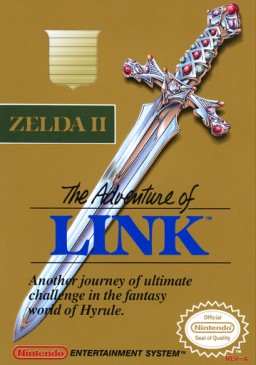
Zelda II: The Adventure of Link is an action role-playing game developed and published by Nintendo. It is the second installment in the Legend of Zelda series and was released in Japan for the Famicom Disk System on January 14, 1987—less than one year after the Japanese release and seven months before the North American release of the original The Legend of Zelda. Zelda II was released in North America and the PAL region for the Nintendo Entertainment System in late 1988, almost two years after its initial release in Japan.

Castlevania II: Simon's Quest is a 1987 action role-playing game developed and published by Konami. It was originally released in Japan in 1987 for the Famicom Disk System, and in North America in 1988 for the Nintendo Entertainment System. It is the second Castlevania game released for the NES, following the original Castlevania (1986). Set seven years after the events of the first installment, the player once again assumes the role of vampire hunter Simon Belmont, who is on a journey to undo a curse placed on him by Dracula at the end of their previous encounter. Dracula's body was split into five parts, which Simon must find and bring to the ruins of Castle Dracula in order to defeat him. The game deviates from the traditional platforming of its predecessor, incorporating role-playing and open world elements.

ActRaiser 2 is a side-scrolling platform game for the Super Nintendo Entertainment System developed by Quintet and published by Enix in 1993.

Castlevania III: Dracula's Curse is a 1989 platform game developed and published by Konami for the Nintendo Entertainment System. It was released in Japan in 1989, and in North America in 1990, and in Europe by Palcom in 1992. It was later released on the Virtual Console for the Wii, Nintendo 3DS, and Wii U.

Castlevania, also referred to as Castlevania 64, is a 1999 action-adventure game developed by Konami's Kobe branch for the Nintendo 64. An expanded version of the game, Castlevania: Legacy of Darkness, was released later in the same year.

Castlevania: Legacy of Darkness is a 1999 action-adventure game developed and published by Konami for the Nintendo 64. A prequel and expanded version of Castlevania, also released on the Nintendo 64 earlier the same year, it contains a remake of the original game with improved graphics, added villains, and alternate versions of some levels.

Super Castlevania IV is a 1991 platform game developed and published by Konami for the Super Nintendo Entertainment System. It has been re-released multiple times, including for the Super NES Classic Edition.

Castlevania: Dracula X, titled Castlevania: Vampire's Kiss in Europe, is a 1995 platform game developed and published by Konami for the Super Nintendo Entertainment System. It is the second Castlevania installment to be released for the Super NES. It is a remake of Castlevania: Rondo of Blood, which was previously released in Japan on the PC Engine Super CD-ROM2 in 1993. While the plot is similar to Rondo of Blood and it uses many of that game's graphics, it features new levels and altered gameplay elements, rather than being a direct port because of the limits of the Super NES cartridge format and exclusivity agreements with PC Engine maker NEC. It was released on July 21, 1995 in Japan, in September 1995 in North America, February 22, 1996 in Europe, and on June 22, 1996, in Australia. The game received mixed reviews, with journalists considering it inferior to Rondo of Blood and criticizing its high difficulty.

Wizards & Warriors, titled Densetsu no Kishi Elrond in Japan, is an action platform video game developed by Rare and published by Acclaim Entertainment for the Nintendo Entertainment System. It was released in North America in December 1987, and in Europe on January 7, 1990. The player controls Kuros, "Knight Warrior of the Books of Excalibur", as he sets out in the Kingdom of Elrond to defeat the evil wizard Malkil. Malkil holds the princess of Elrond captive in Castle IronSpire, deep within the forests of Elrond. The player fights through forests, tunnels, and caves, while collecting keys, treasure, weapons, and magic items.

Goemon's Great Adventure, known as Mystical Ninja 2 Starring Goemon in Europe, is a video game developed and released by Konami for the Nintendo 64 on December 23, 1998. It is the fourth game in the Ganbare Goemon series released in North America and Europe, following Mystical Ninja Starring Goemon, released two years earlier. Featuring platform gameplay in 2.5D, it returns the series to a side-scrolling format.
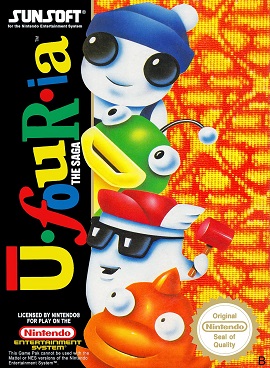
Ufouria: The Saga is a 1991 action-adventure video game developed and published in Japan and Europe by Sunsoft for the Nintendo Entertainment System. It is the first entry in the Hebereke franchise, where almost every installment in the series features a completely different playstyle. Controlling a humanoid-looking character called Bop-Louie through an interconnected world, the game focuses on exploration and searching for items and power-ups in vein of Metroid and Blaster Master, fighting bosses and minibosses. During gameplay, the player locates the main character's three friends, each of which becomes a playable character and have unique skills that allow the player to reach previously inaccessible areas.

Mega Man: Dr. Wily's Revenge, also known as Mega Man in Dr. Wily's Revenge or in Japan as Rockman World is an action-platform video game by Capcom for the Nintendo Game Boy. It is the first game in the handheld series of the Mega Man franchise. It was released in Japan on July 26, 1991, and was localized in North America that December and in Europe the following year. The game continues the adventures of the android hero Mega Man as he once again confronts the evil Dr. Wily, who has dispatched his revived "Robot Masters" and a new "Mega Man Killer" named Enker.

Lufia & the Fortress of Doom, known as Estpolis Denki in Japan, is a role-playing video game developed by Neverland and published by Taito in 1993, for the Super Nintendo Entertainment System. It is the first title in the Lufia series of video games and the only game from the series released under the Taito label in North America.
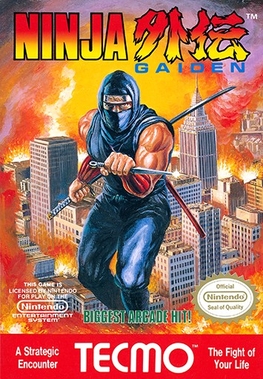
Ninja Gaiden, released in Japan as Ninja Ryūkenden and as Shadow Warriors in Europe, is an action-platform video game developed and published by Tecmo for the Nintendo Entertainment System. Its development and release coincided with the beat 'em up arcade version of the same name. It was released in December 1988 in Japan, in March 1989 in North America, and in August 1991 in Europe. It has been ported to several other platforms, including the PC Engine, the Super NES, and mobile phones.
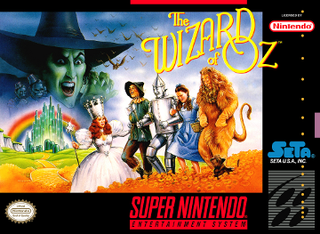
The Wizard of Oz is a 1993 platform video game released for the Super Nintendo Entertainment System and loosely based on the 1939 film The Wizard of Oz. Developed by Manley & Associates, it was published by SETA Corporation and released in North America in 1993 and in Europe in 1994. The player assumes the role of Dorothy, the Scarecrow, the Tin Man, or the Cowardly Lion in a series of levels containing hidden areas, mazes, and puzzles to bring Glinda's magic ruby slippers to the Wizard of Oz.

Castlevania, known in Japan as Akumajō Dracula, is a 1986 platform game developed and published by Konami for the Family Computer Disk System. It was originally released in Japan in September 1986, before being ported to cartridge format and released in North America for the Nintendo Entertainment System (NES) in May 1987 and in Europe in 1988. It was also re-issued for the Family Computer in cartridge format in 1993. It is the first game in Konami's Castlevania video game series.

The Nintendo Entertainment System Game Pak is the software storage medium for the Nintendo Entertainment System.




















